
The benefits of hunting with a suppressor can be soothing to your ears.
Joe Metzger and his hunting guide spotted the elk herd in a small canyon, just below a ridgeline, near Craig, Colo. There were about 15 bulls and cows milling around and feeding. Using boulders for cover, Metzger and his guide got to within 220 yards of the elk. Metzger had a cow tag. Selecting a yearling cow, he lined up the crosshairs on his custom .308 bolt-action rifle and squeezed off a shot.
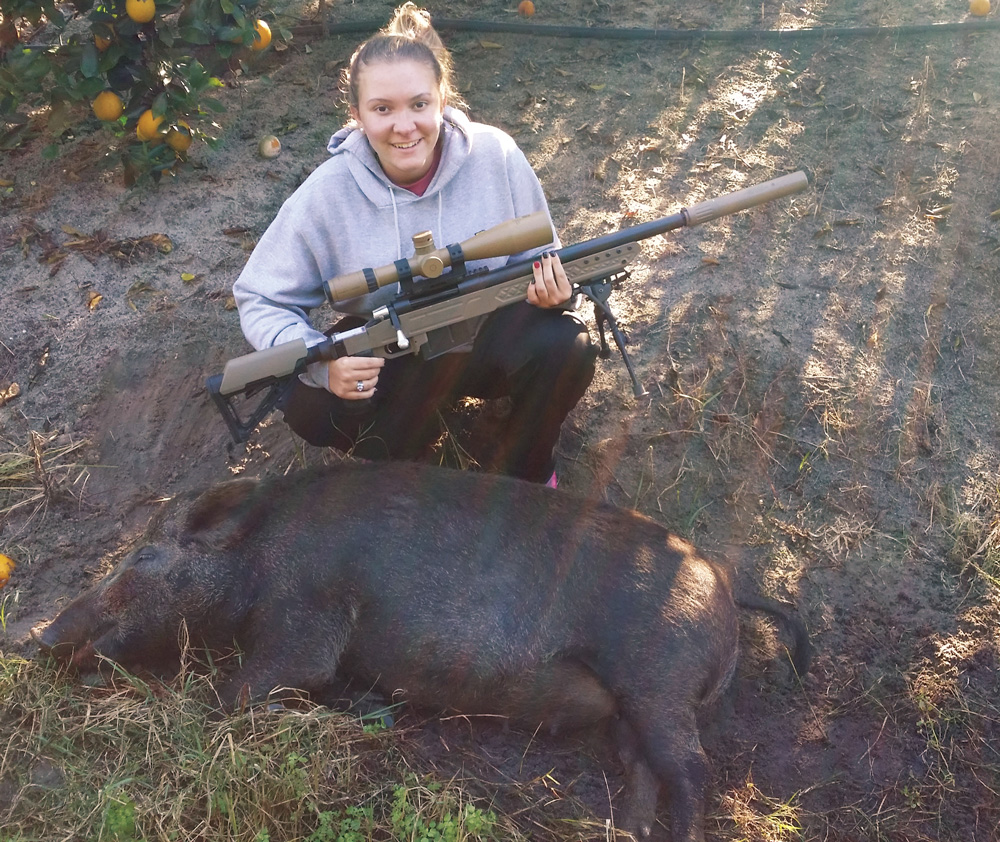
The young elk reared up on her back legs for a moment and then fell over backwards, sliding down the snow-covered slope. The other elk were momentarily startled, jumped a bit, looked around but within a minute went back to feeding.
“If there’d been another hunter with me, he could’ve filled his tag, too,” says Metzger. “My guide said he’d never seen anything like that.”
This happened in October 2013 at the C-Punch Ranch, on a hunt for wounded veterans, and Metzger’s rifle was tipped with a Thunder Beast 30 PI suppressor. For Metzger, a former U.S. Army Ranger who suffered wounds while serving in Iraq, a suppressor was a natural way to hunt. He was introduced to suppressors while in the military, and instantly saw the many benefits to using them, including hearing protection and allowing better communications when multiple shooters/hunters were afield.
Another advantage Metzger sees as a hunter is that suppressors can actually make the hunting experience better for other sportsmen as well.
“I can see if you’re on BLM or Forest Service lands out West, and you’re walking into an area, and all of a sudden a guy starts cracking off shots up ahead of you,” Metzger says. “You might as well go back to your camp. Everything’s going to be scared off for a good square mile or better from that shooting.”
But with suppressed rifles, even if game animals are frightened, it will be in a much more localized area. To paraphrase the American poet Robert Frost, good suppressors make good hunter neighbors.
Suppressor Style
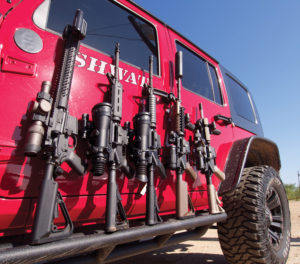
Jonathan Owen co-founded Special Hog Weapons and Tactics over two years ago, SHWAT.com, as a meeting place for people who like tactical hog hunting. He’s hunted and taken hogs with suppressed rifles. Along with AR-style rifles and night vision gear, suppressors top the list of equipment that tactical hog hunters gravitate toward—and for good reason.
“With a hearing safe suppressor, you can communicate much more easily with hunting partners,” Owen notes. “You can hear the pigs feeding and moving around when you don’t have foamies crammed in your ear canal. Additionally, suppressors tend to mitigate both recoil and muzzle rise, allowing you faster and more-accurately fired follow-up shots.” The latter, Owen notes, is big help when you suddenly come up on a group of wild hogs and it’s time to dump a full magazine.
“People used to ask me, ‘Why would you want to hunt with a suppressor?’” says John Hollister. “I had a lot of very good reasons, like saving your hearing, and I would explain that. But, really, I’m to the point where I just switch it around and ask them back—‘Why would you not want to hunt with a suppressed firearm?’”
Hollister admits to a rather large pro-suppressor bias. He is, after all, the product manager for Advanced Armaments Corporation (AAC), one of the country’s top manufacturers of suppressors. But he’s also been using suppressors, at the range and in the field, for over a decade. He’s introduced friends, family and all sorts of complete strangers to suppressors, the latter at various shooting events around the country. And any time a newbie has tried out a suppressed firearm, he or she always has the same reaction: “I have to get one of these!”
“Saving your ears from muzzle blast, communicating with other hunters in the field—these are really important reasons to use suppressors,” says Hollister. “But one reason that doesn’t get a lot of attention for suppressor use in hunting is introducing young people and newcomers to our sport.”
A relatively quiet, suppressed deer rifle, for example, is going to be much less threatening to a fledgling hunter than a gun that sounds like a clap of thunder. And because of the way they disperse muzzle blast, suppressors often reduce recoil significantly. Young people, as well as smaller-framed female and male shooters, are much more likely to try and enjoy hunting with a rifle that doesn’t mule-kick their shoulders.
Ultimate Eradication Tool
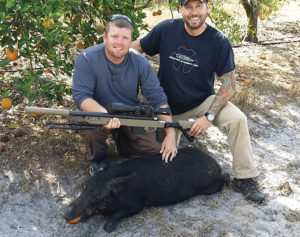
Buck Holly knows firsthand how suppressors can reduce felt recoil—and in the process, make hunting more enjoyable and successful.
Holly runs a custom rifle-making business, C&H Precision Weapons of City, LaBelle, Fla., which specializes in manufacturing authentic Marine Corps M-40 sniper rifles. For the last half-dozen years, he’s hunted game with suppressed rifles, including deer and elk—but most especially hogs.
That’s because Holly’s “part-time” job, when he’s not making custom rifles, is being contracted by the state and local governments to eradicate the wild and very destructive hogs on 20,000 acres of public lands in South Florida. Holly does this work with suppressed rifles and has excellent results.
Unlike Metzger’s experience, Holly says his use of suppressors really is not about relative quiet and not scaring off his prey. There’s a good deal of hunting pressure on the public lands where Holly does his eradication work, and the wild hogs here are generally what hunters consider “educated.”
“They know the game,” says Holly. “They hear that sonic crack of the bullet and they’re running.”
In addition to the improved communication between hunters that suppressors provide, the big advantage of the AAC suppressors Holly uses is that they really tame the recoil of the big-bore rifles he uses on his hog work. Holly goes after hogs in really thick, southern Florida swamps. He also has to account for all hogs killed, which means actually having a carcass to show the people he works for.
“I used some smaller caliber rifles in the beginning, but they wouldn’t always drop the hog where he stood,” Holly explains. “Believe me, you don’t want to go far into some of this brush looking for a hog. So the rifles I settled on are all chambered in .300 Win. Mag. One good shot and they drop.”
The recoil, though, can be pretty stout on a .300 Win. Mag. bolt action. Until, that is, Holly attaches an AAC Mark 13 suppressor. Even Holly’s teenaged sons can fire the rifle without getting their shoulders pounded and bruised.
“With the Mark 13, my .300 Winchester Magnums really don’t kick much more than a .243, and my boys love using the rifles,” Holly says. “And we don’t have to worry about trying to find a wounded hog in the snake-infested swamps!”
Maximizing Benefits of Suppressor Hunting
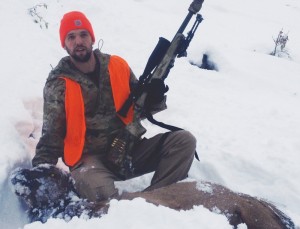 If you’re only going to use one suppressor on one firearm, Holly suggests you have the end of your barrel threaded, and buy a suppressor that directly screws onto that barrel. That way, you essentially have a complete unit, always at the ready.
If you’re only going to use one suppressor on one firearm, Holly suggests you have the end of your barrel threaded, and buy a suppressor that directly screws onto that barrel. That way, you essentially have a complete unit, always at the ready.
However, let’s say you buy a suppressor to attach to a number of different rifles, depending on hunting conditions and game species you are going after. In that case, each of your rifles will need a special muzzle break or mount to accept the suppressor.
“Whichever way you go, you may well need to get your barrel threaded,” Holly notes. “My advice? Don’t do that yourself. It might look easy enough—all you need is a tap and a die, right?—but, guaranteed, most people are going to get it wrong. Even if your threading is ever so slightly off, you are going to have big problems. So have a professional gunsmith do the threading.”
For most rifles, adding a suppressor changes the bullet’s point of impact, too. The weight and balance of a rifle will be different with a suppressor, too, and may affect the shots you can and would want to take. For those reasons, SHWAT.com’s Owen says it is important that you practice and train with your suppressor on your firearm.
As Owen says, “Training makes us better at anything we do, but we should train with what we use. If you plan to hunt suppressed, train suppressed. In the field, in the middle of a hunt, is no place to find out what your suppressed rifle can and can’t do.”

Next Step: Get your FREE Printable Target Pack
Enhance your shooting precision with our 62 MOA Targets, perfect for rifles and handguns. Crafted in collaboration with Storm Tactical for accuracy and versatility.
Subscribe to the Gun Digest email newsletter and get your downloadable target pack sent straight to your inbox. Stay updated with the latest firearms info in the industry.

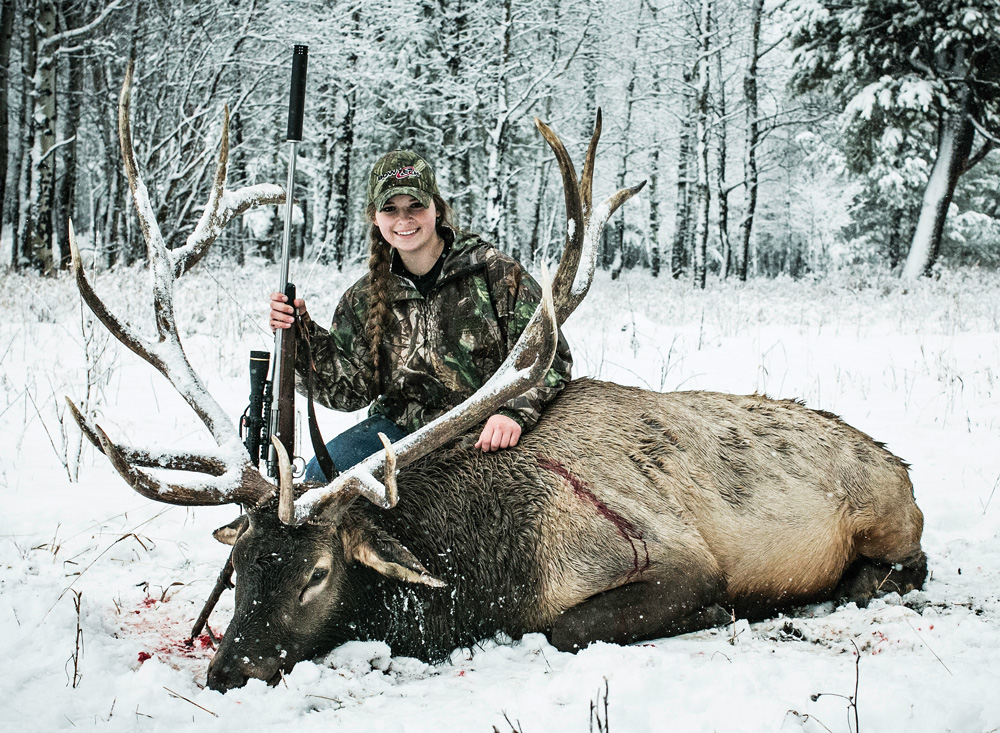
![Best Concealed Carry Guns In 2025 [Field Tested] Wilson Combat EDC X9S 1](https://gundigest.com/wp-content/uploads/Wilson-Combat-EDC-X9S-1-324x160.jpg)


![Best 9mm Carbine: Affordable PCCs [Tested] Ruger Carbine Shooting](https://gundigest.com/wp-content/uploads/Ruger-Carbine-Shooting-100x70.jpg)
![Best AR-15: Top Options Available Today [Field Tested] Harrington and Richardson PSA XM177E2 feature](https://gundigest.com/wp-content/uploads/Harrington-and-Richardson-PSA-XM177E2-feature-100x70.jpg)
